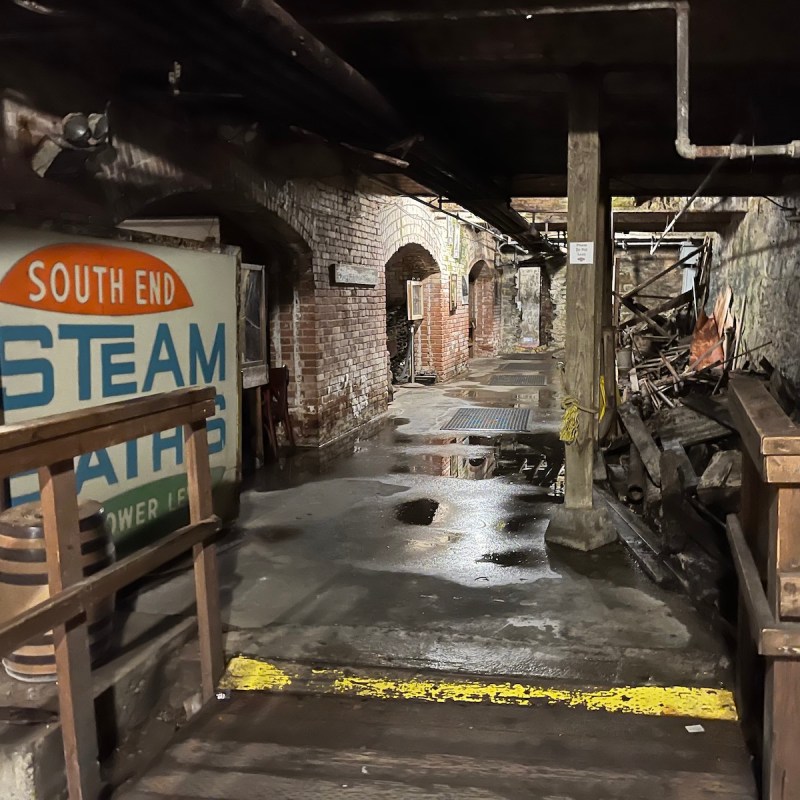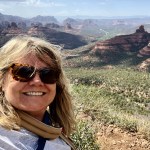
Visitors with a curiosity about the other side of Seattle’s story need look no farther than a few feet below them, into the city’s notorious Underground.
Videos by TravelAwaits
Thanks to fascinating guided tours in the city’s historic Pioneer Square neighborhood, venturing beneath the streets is a fairly easy feat. For decades, Bill Speidel’s Underground Tour has been giving tourists a glimpse into Seattle’s colorful past — complete with stories of muddy streets, sinking buildings, non-existent sewage disposal, and ultimately, the devastating Great Seattle Fire of 1889.
As a frequent visitor to the Emerald City over the years, I was familiar with modern Seattle’s top attractions like the Space Needle, Pike Place Market, and Chihuly Garden and Glass. But as I was planning a recent return visit, I realized I had barely scratched the surface of Seattle’s early history as a logging town.
The Underground tour certainly helped to fill in the blanks, from Seattle’s start as a town built on a muddy tide flat, to the destruction wreaked by the Great Fire, and the development of the Underground as a fix for many of the early problems.
Here are 7 reasons to go underground for Seattle’s most unique tour.

1. Quirky History Of Seattle
Bill Speidel’s Seattle Underground Tour lasts about 75 minutes, and an enormous amount of information is packed into that time, all in an entertaining format. My tour guide threw in plenty of humorous stories about Seattle’s early history, including how the first steam-powered sawmill of the Pacific Northwest came to be located in Seattle, as well as the difficulties the pioneer city had disposing of its sewage.
Starting in a theater beneath Doc Maynard’s Public House in Pioneer Square, the tour also features a montage of early-Seattle personalities, including town founders David “Doc” Maynard, Arthur Denny, and Henry Yesler. Cardboard cutouts of the three men are arranged around the room, helping to bring their stories to life.
Tale Of The Great Seattle Fire
The Great Seattle Fire of 1889 was the impetus for the Underground, and the tour focuses considerable time on that devastating event. As relayed by my tour guide, at 2 p.m. on June 6, 1889, a 19-year-old carpenter-in-training burned the city down when he was melting glue in a pot. Halfway through the melting process, the young carpenter left the glue unattended for about 10–12 minutes. By the time he returned, the glue had come to a boil and began splattering onto the kindling that was lying all around.
Hours later, Seattle’s business district, which consisted mostly of wood buildings, was burned to the ground. Seattle opted to start over with stone and brick buildings, and the Underground was born.
2. Walking Tour Through Historic Pioneer Square

Starting at Doc Maynard’s, the tour heads into Pioneer Square and under the neighborhood’s famous pergola archway. Known as the birthplace of Seattle, Pioneer Square offers a frozen-in-time look at the brick and stone buildings of downtown Seattle in the late 1800s and early 1900s.
The cast iron and glass Pioneer Square Pergola was originally built in 1909 and served as a shelter for cable car passengers on the James Street and Yesler Way lines.
3. Underground Passageways And Storefronts

The Bill Speidel tour is billed as a “stroll through intriguing subterranean storefronts and sidewalks entombed when the city rebuilt on top of itself after the Great Fire of 1889.”
The tour delivers on that claim, taking the participants (there were about 20 of us in my tour group) down a series of stairs and into an area of narrow wooden walkways bordered by brick walls bearing vintage signs that read, “South End Steam Baths” and “Northern Hotel.”

Along the way, my tour guide explained the origin of the Underground. He told the group that after fire wiped out about 33 blocks of Seattle’s main business district in 1889, the city came up with the idea of building high-stone-retaining walls around the city blocks and then dumping dirt between them.
The tour’s website adds that the plan involved building walls on either side of the old streets, filling in the spaces between the walls, and then paving over the fill “to effectively raise the streets, making them one story higher than the old sidewalks that still ran alongside them.” Eventually, hollow tunnels were left between the old and new sidewalks, “creating the passageways of today’s Underground.”
4. Seattle Street Views

The Underground Tour includes several separate underground areas, as well as walks in between and along the above-ground city streets and alleys.
One of the highlights for me was walking amidst the vintage Seattle buildings, soaking in the history. I learned, for instance, that tour founder Bill Speidel spearheaded the preservation of the buildings of Pioneer Square, many of which had fallen into disrepair by the mid-1950s. Through letter-writing and petition campaigns, Speidel succeeded by 1970 in getting 25 blocks of brick and stone buildings in Seattle’s birthplace listed on the National Historic Register. Along the way, he founded tours to tell the story of Seattle’s Underground.
Pro Tip: One of the standout buildings in the area is the 38-story Smith Tower, an early Seattle skyscraper. Today, it offers tours and an elevator ride to its observation deck with sweeping views of the region.
5. Underground Museum

The tour concludes in the Underground Tour’s Rogues Gallery, which features photos of characters featured in the tour narrative, as well as Northwest memorabilia from Seattle’s early days.
The Underground Gift Shop offers souvenirs and books, including the Sons of the Profits, a book written by tour founder Bill Speidel, who died in 1988.
Pro Tips
- Located on 1st Avenue in Pioneer Square, the Bill Speidel Underground Tour is just a few city blocks from the Seattle Light Rail Pioneer Square Station and is an easy 5-minute walk.
- As another option for underground guided tours in Pioneer Square, Beneath the Streets tours offers a choice of a family-friendly exploration of Seattle’s Underground; an adults-only exploration of the debauchery and vice of early Seattle; and a Queer History Tour.
Related Reading:
